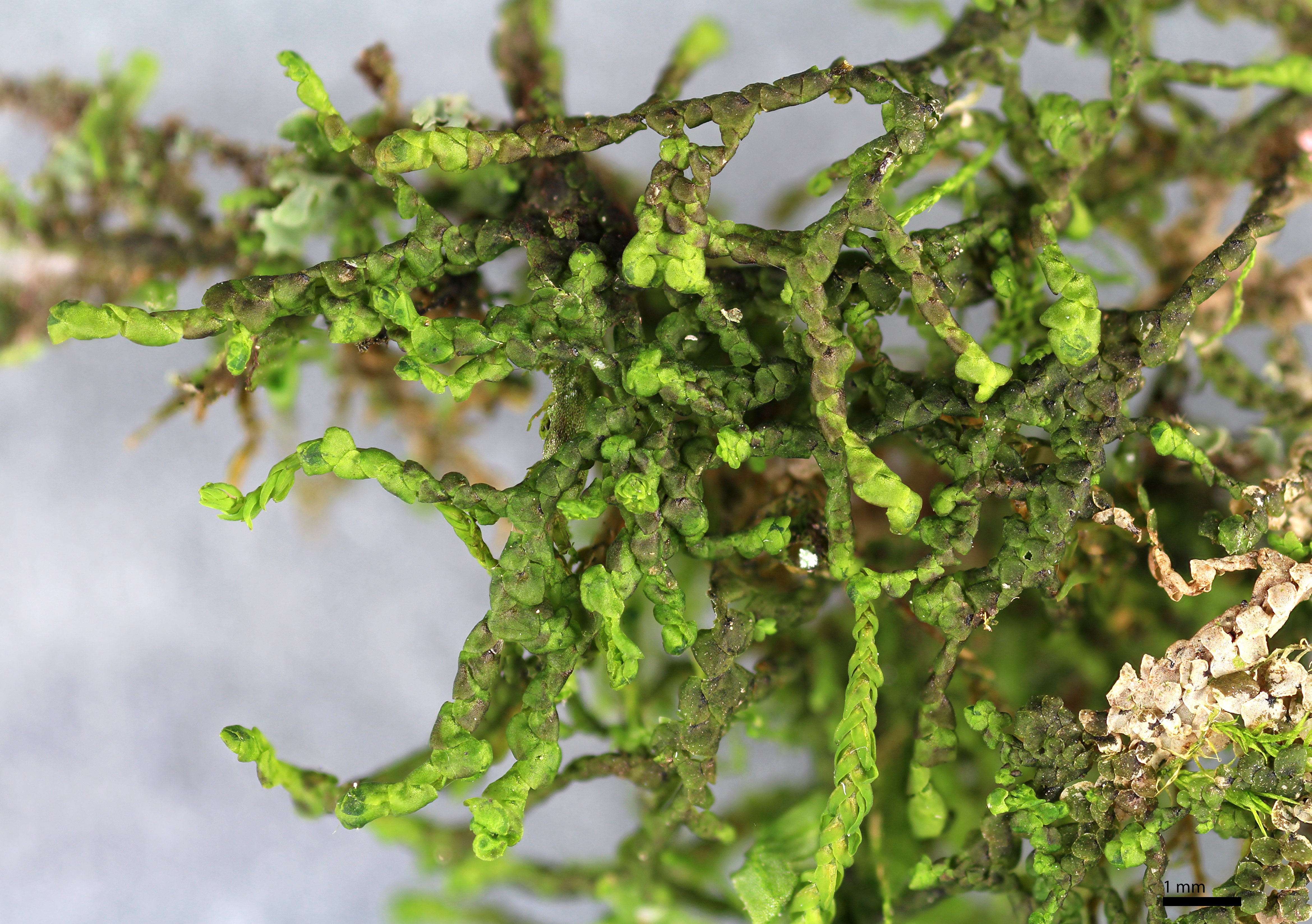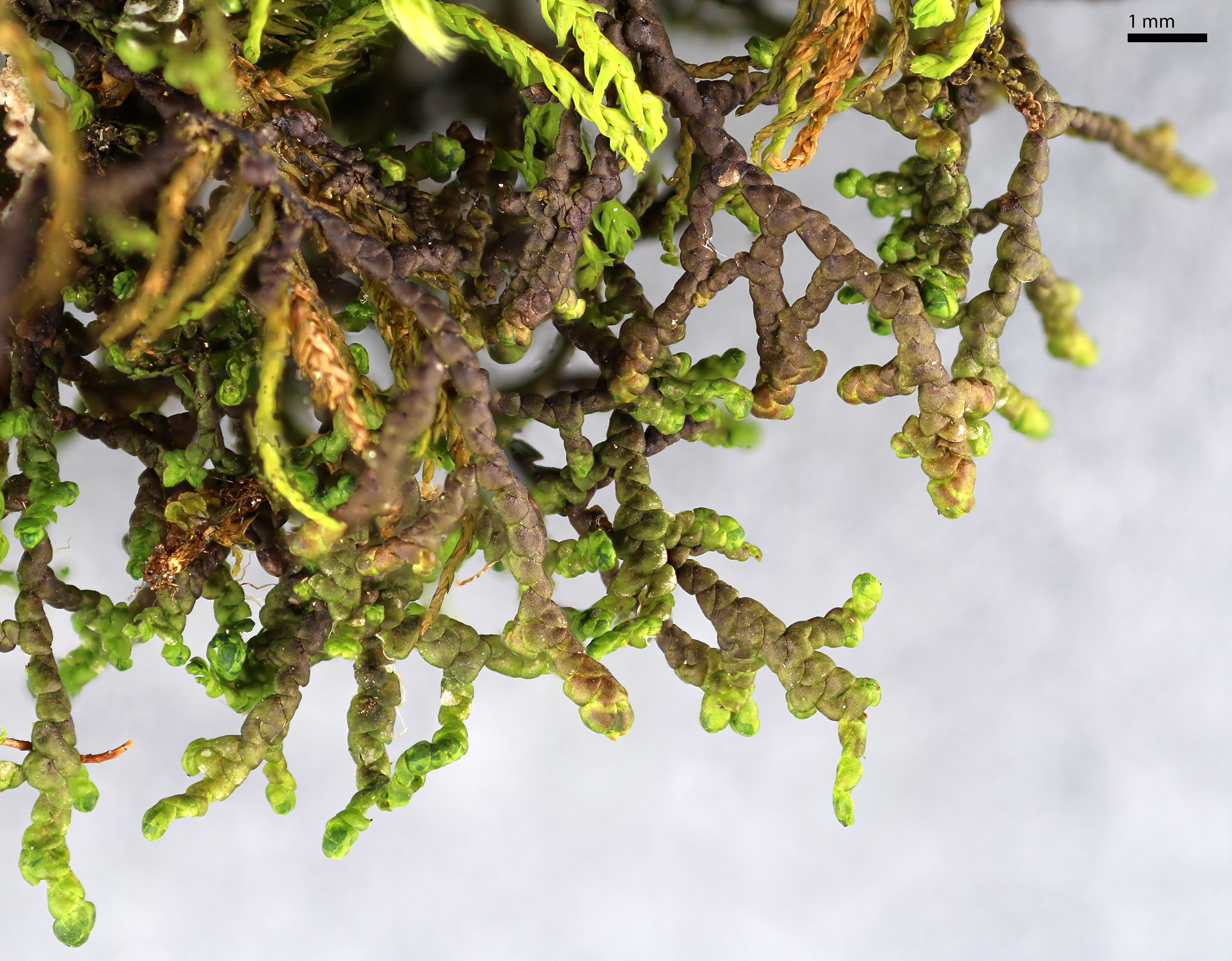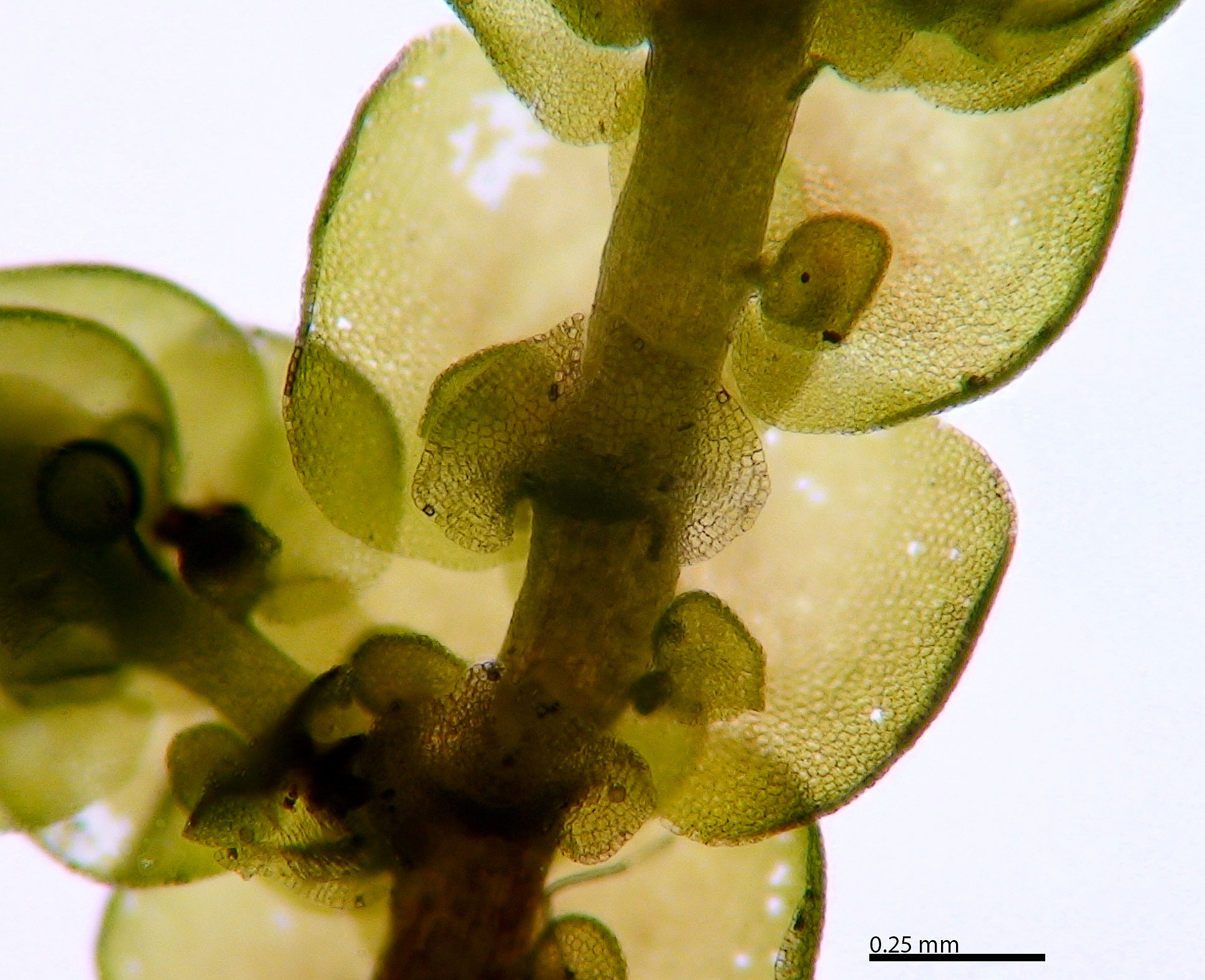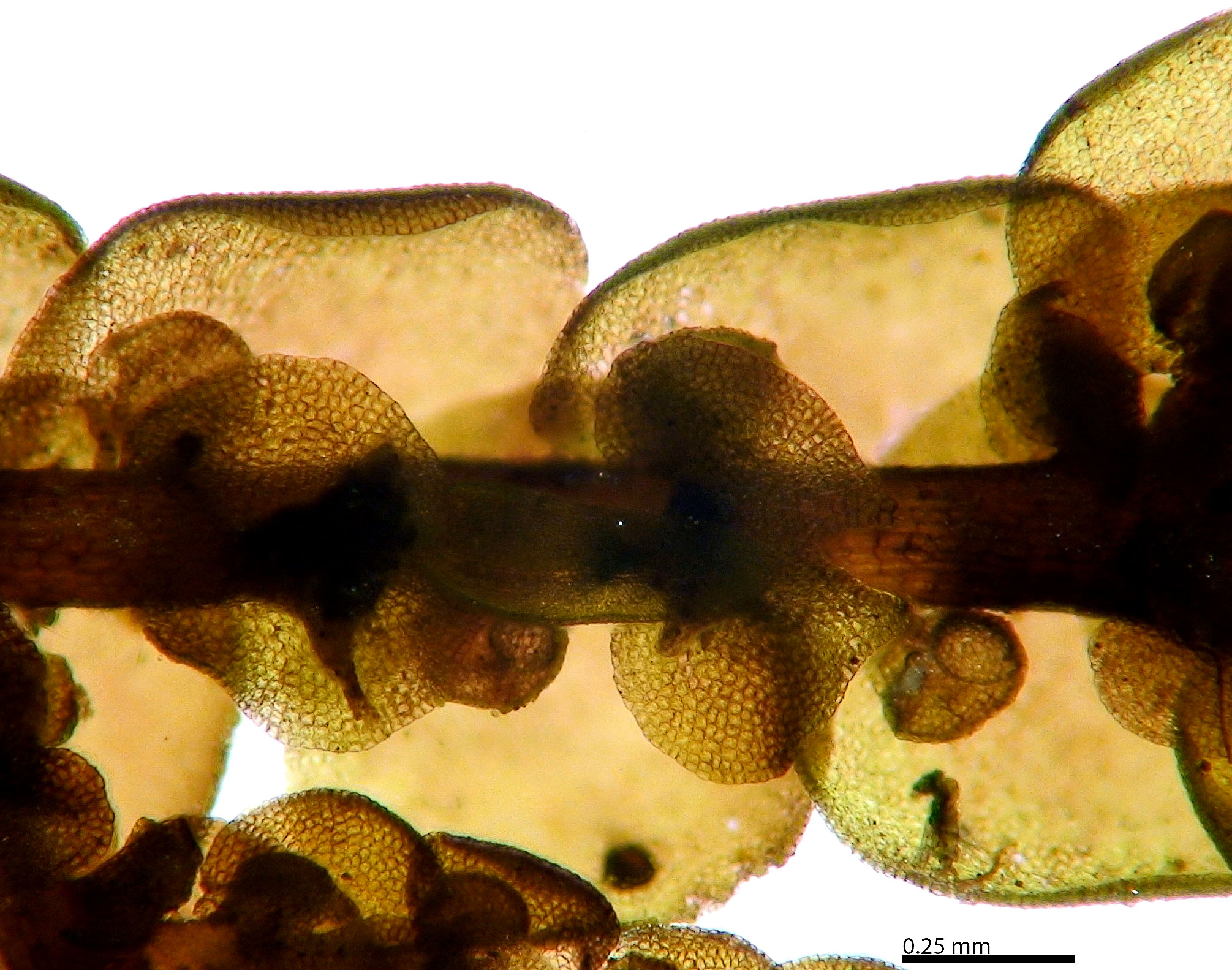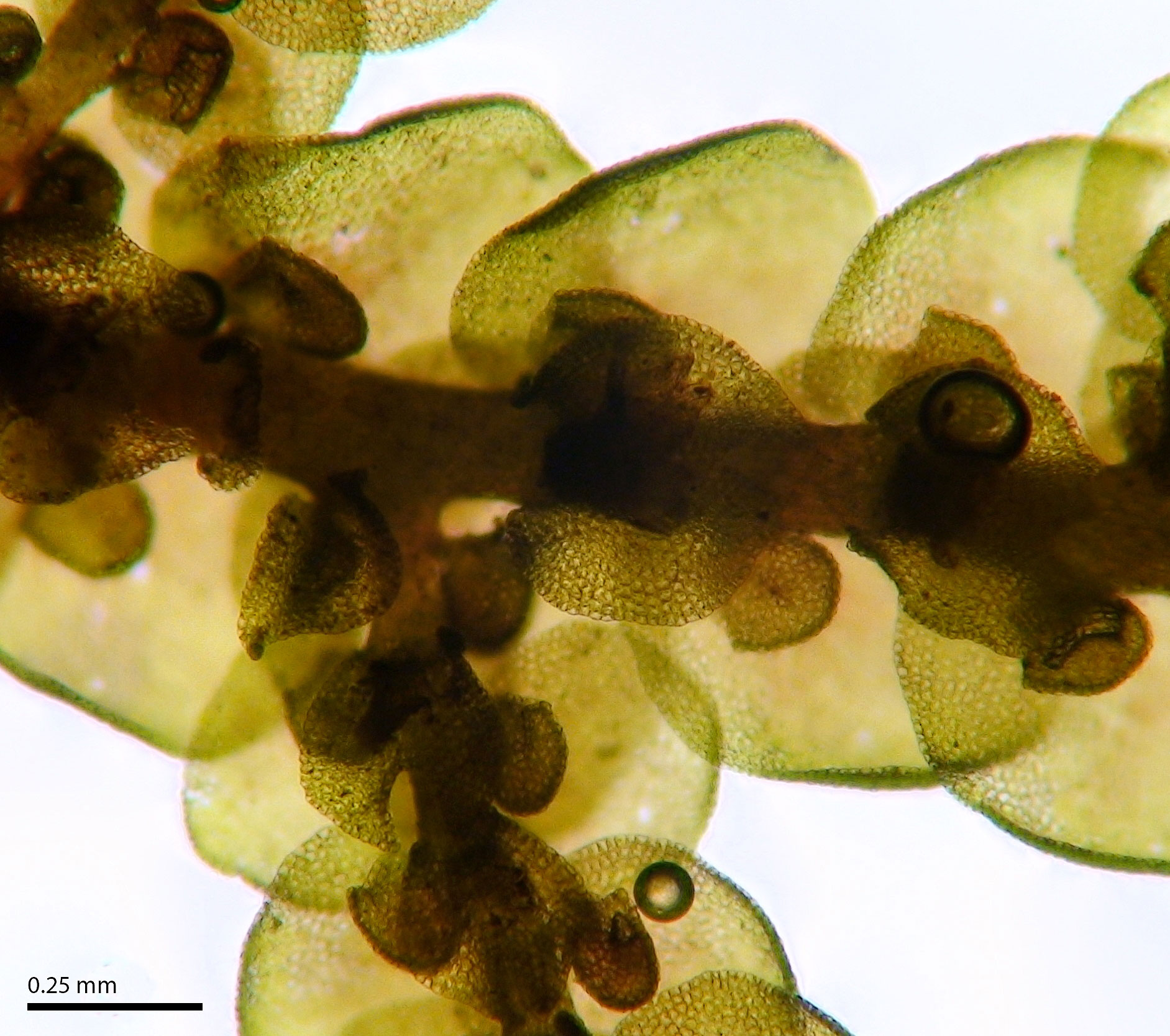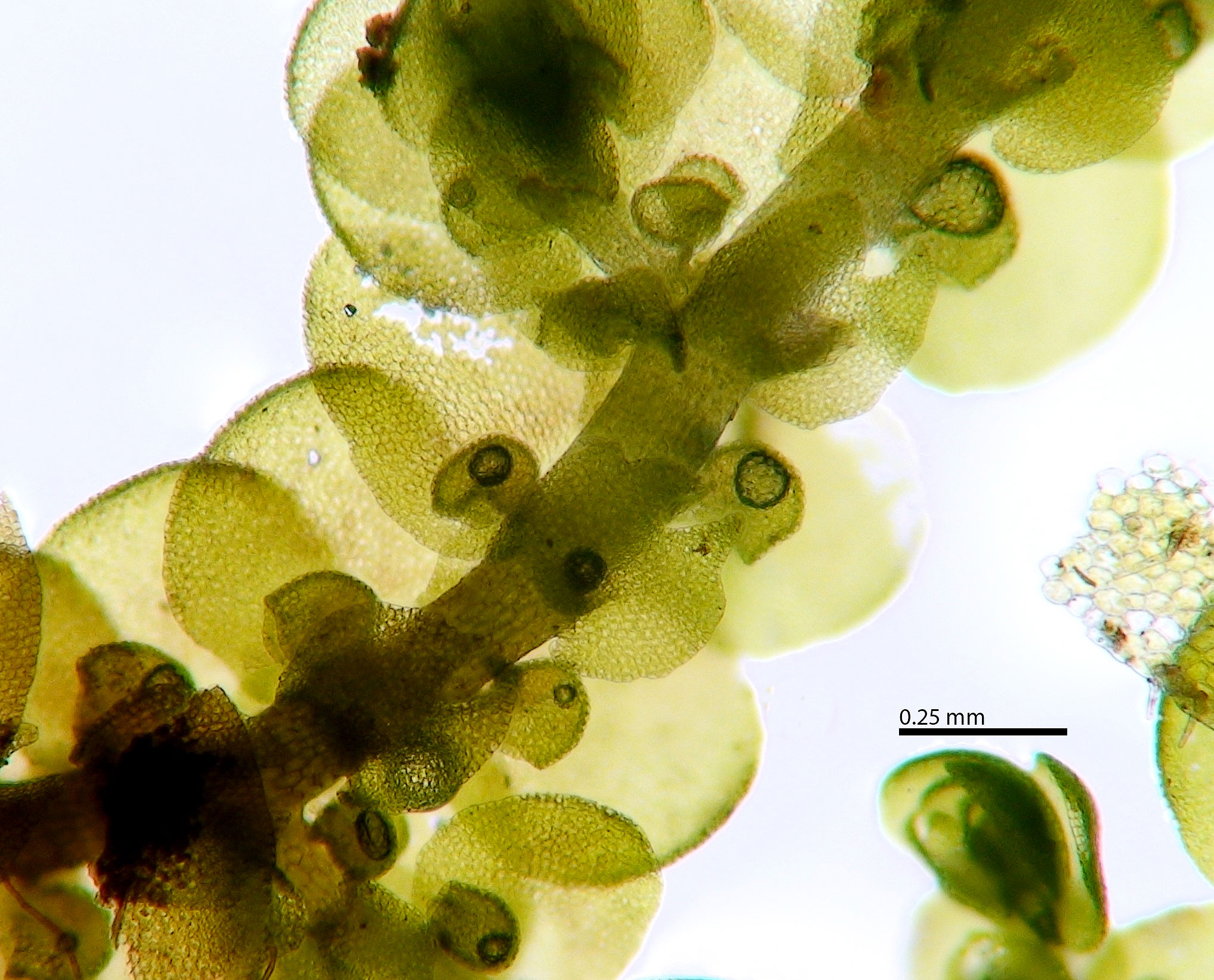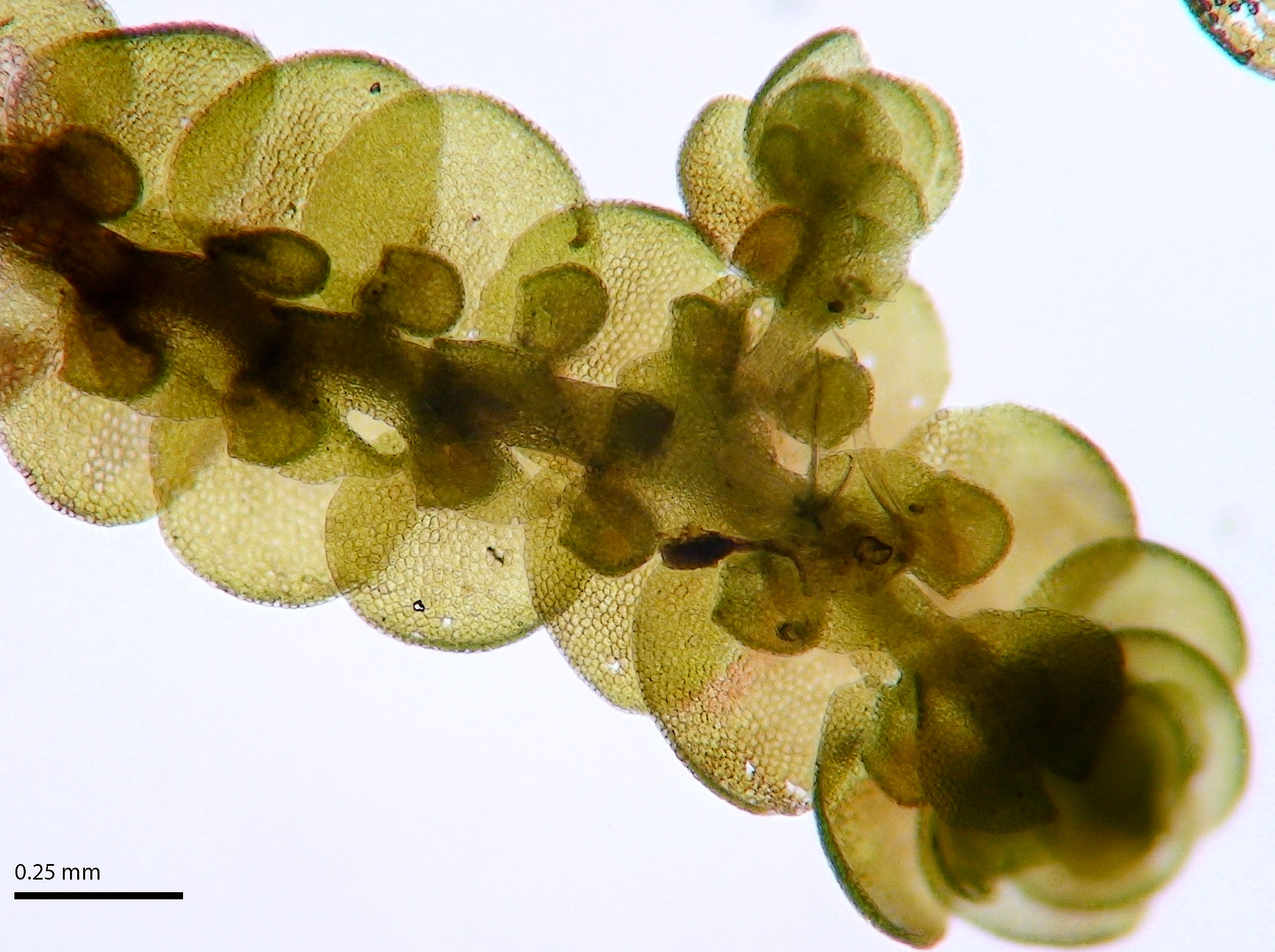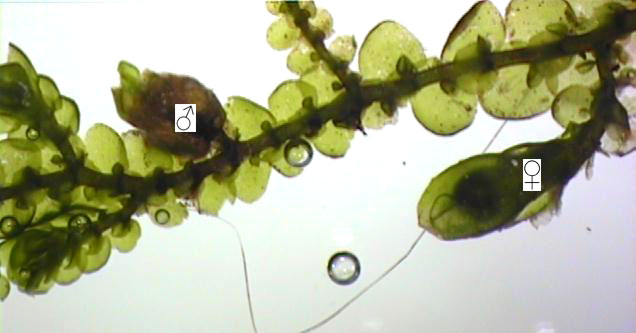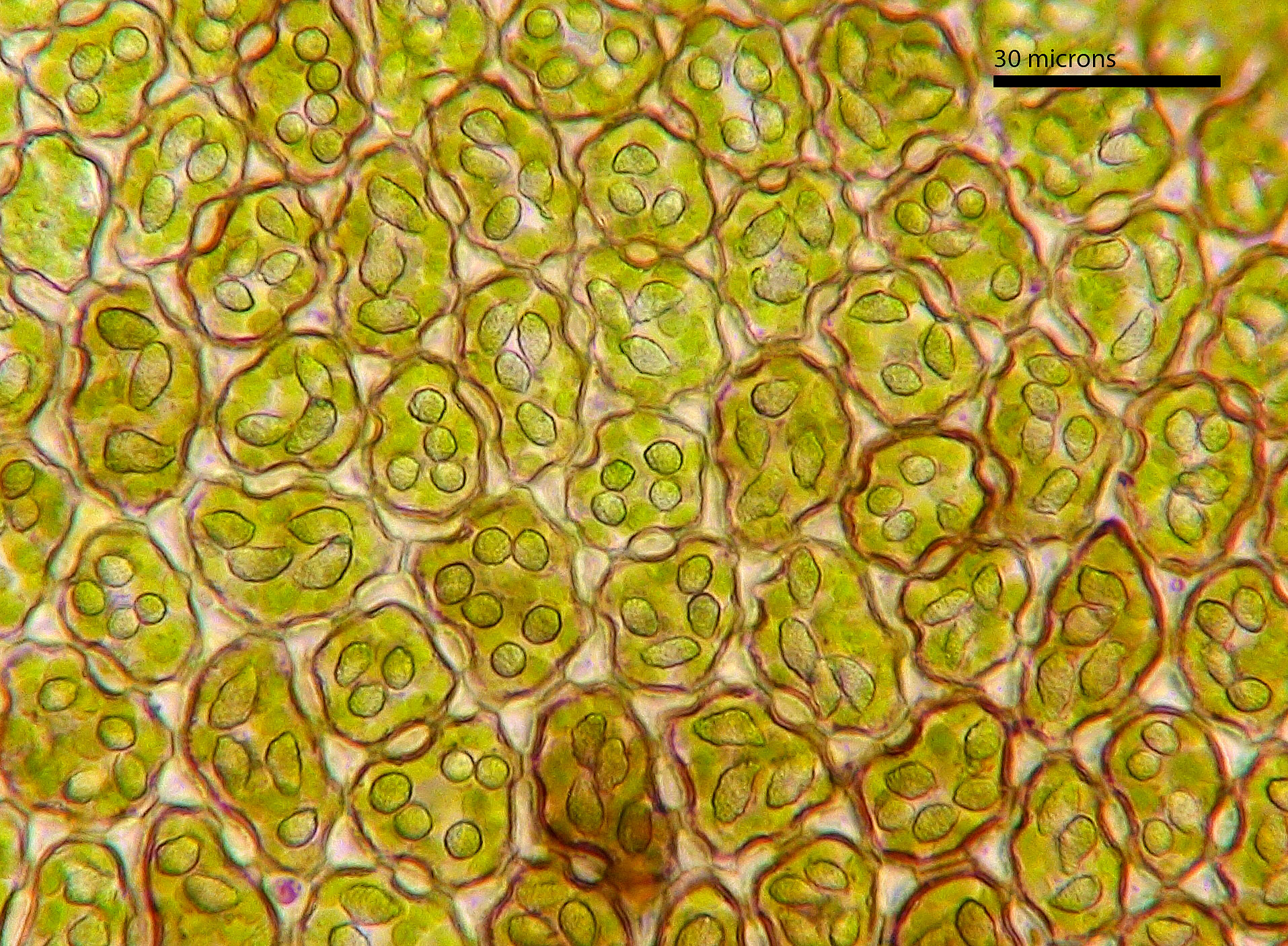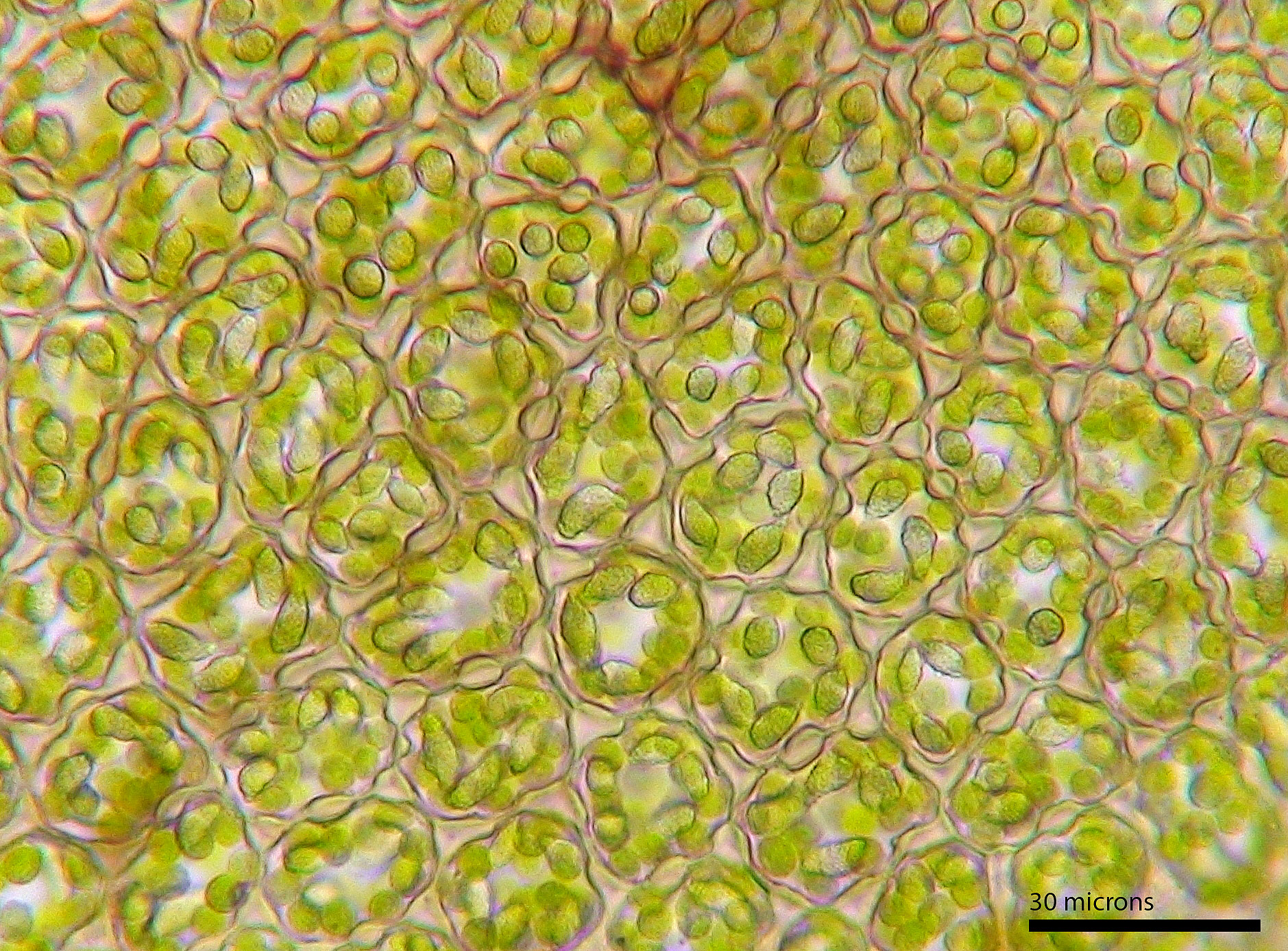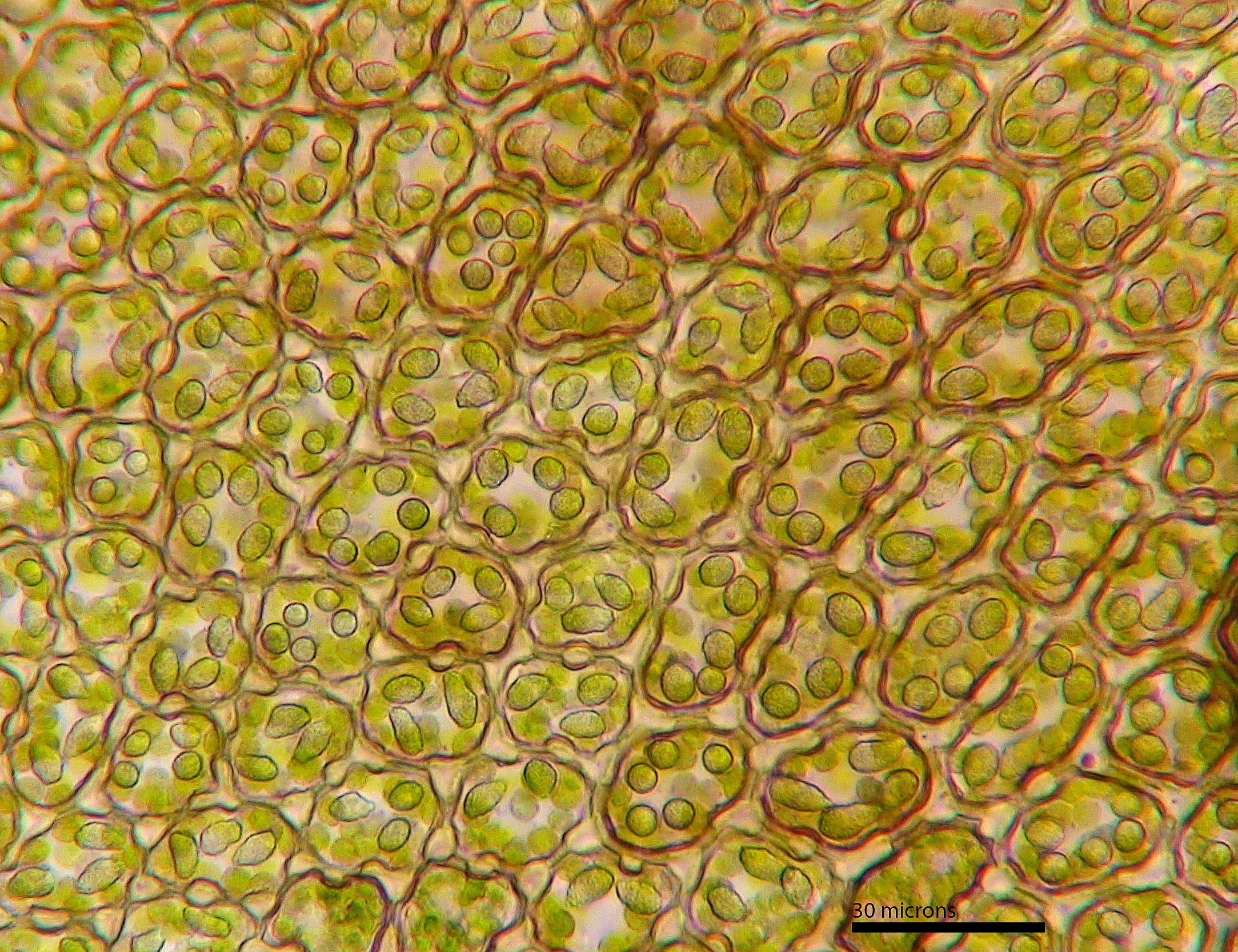Frullania plana Sull.
Family: Frullaniaceae
Synonyms
none
NatureServe Conservation Status
G4
Distribution
Endemic to eastern North America, Massachusetts south to north Alabama, Arkansas.
Habitat
A species of shaded sites in deciduous forests and essentially restricted to rock substrates. Schuster (1992) reports a single occurrence on the bark of “a large Aesculus octandra at 5000-5200 ft. elevation. The elevational range given by Schuster (1992, p. 244): “chiefly at elevations above 1000 feet but not above 5500 feet.”
Rocks supporting F. plana are often in moist locations yet occurrences on shaded, dry rocks are not uncommon. Most locations are thought to have basic or subbasic rocks (never strongly acidic). While F. plana is not a decided calciphile, occurrences on limestone are known. While not restricted to the near vicinity of streams, occurrences in stream ravines are typical.
Brief Description and Tips for Identification
Shoot width: to just over 1 mm wide. Color: predominantly green. Cell walls in leaf lobe: with intermediate thickenings. Dorsal lobe insertion: cordate. Lobules: inflated lobules about as wide as long.
Monoicous. Perianth surface smooth; perianth borne on a short side branch.
F. plana has wide underleaves strongly cordate at base and is not likely to be confused with any other regional species.
Frullania riparioides is superficially similar to F. plana. It is our only other rock-restricted Frullania but it is always without perianths and the underleaves are not cordate. The problem comes, when in the absence of sexual branches, one examines only weak shoots of F. plana and determines that the underleaves do not have a cordate base.
Salient Features
- Underleaves large with cordate base
- Monoicous, although sometimes difficult to demonstrate
- Perianths are terminal on lateral branches
- Consistently on rock
